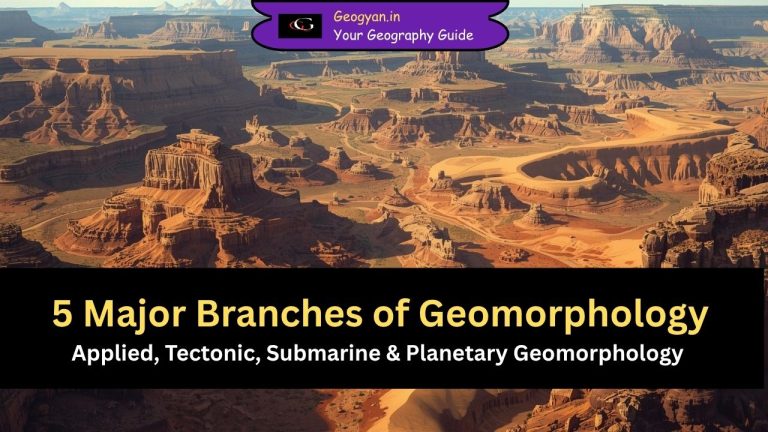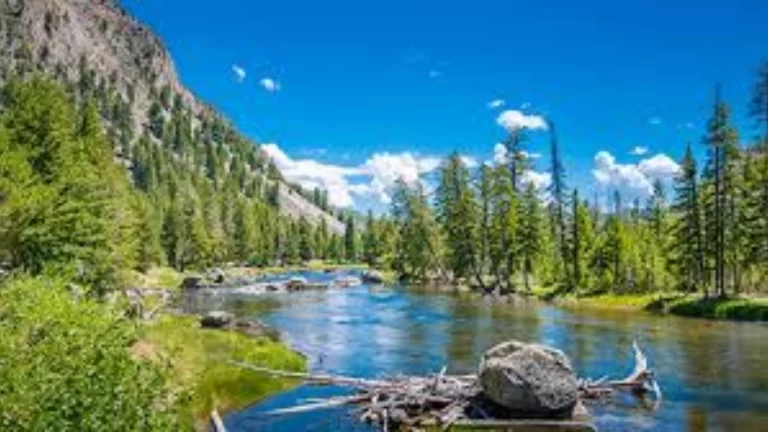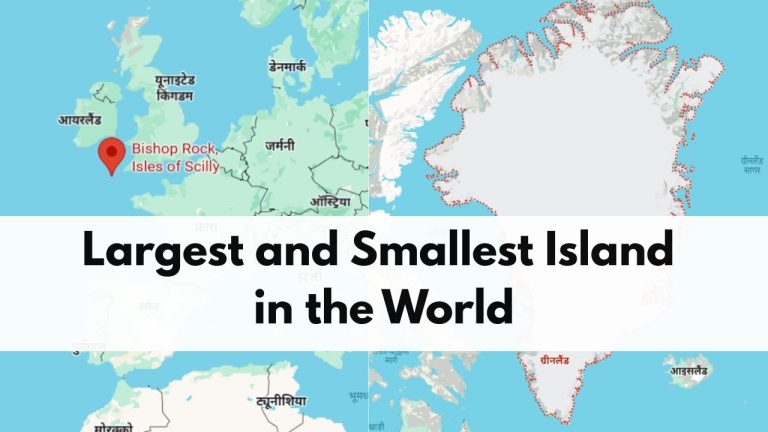Access the latest NCERT Solutions for Class 8 Geography Chapter-2: Land, Soil, Water, Natural Vegetation, and Wildlife Resources, updated for 2024-2025. Solution is designed to help students tackle difficult questions with ease. The content is written in simple, easy-to-understand language.
Exercise
Answer the following questions:
(i) Which are the two main climatic factors responsible for soil formation?
The two main climatic factors responsible for soil formation are temperature and rainfall.
(ii) Write any two reasons for land degradation today.
Two reasons for land degradation today are:
1. Deforestation
2. Overgrazing.
(iii) Why is land considered an important resource?
Land is considered an important resource because it is used for agriculture, forestry, mining, and setting up industries. It also supports human habitation and provides the foundation for construction.
(iv) Name any two steps that the government has taken to conserve plants and animals.
Two steps taken by the government to conserve plants and animals are:
1. Setting up national parks and wildlife sanctuaries
2. Establishing biosphere reserves.
(v) Suggest three ways to conserve water.
Three ways to conserve water are:
1. Rainwater harvesting
2. Drip irrigation
3. Reuse and recycle water in daily activities.
Tick the correct answer:
(i) Which one of the following is NOT a factor of soil formation?
(a) time
(b) soil texture
(c) organic matter
Answer: (b) soil texture.
(ii) Which one of the following methods is most appropriate to check soil erosion on steep slopes?
(a) shelterbelts
(b) mulching
(c) terrace cultivation
Answer: (c) terrace cultivation.
(iii) Which one of the following is NOT in favor of the conservation of nature?
(a) switch off the bulb when not in use
(b) close the tap immediately after using
(c) dispose polypacks after shopping
Answer: (c) dispose of polypacks after shopping.
Match the following:
(i) Land use (a) prevent soil erosion
(ii) Humus (b) narrow zone of contact between the lithosphere, hydrosphere and atmosphere
( iii) Rock dams (c) productive use of land
(iv) Biosphere (d) organic matter deposited on top soil
(e) contour ploughing
Ans.
(i) Land use – (c) productive use of land
(ii) Humus – (d) organic matter deposited on top soil
(iii) Rock dams– (a) prevent soil erosion
(iv) Biosphere – (b) narrow zone of contact between the lithosphere, hydrosphere, and atmosphere.
State whether the given statement is true or false:
(i) Ganga–Brahmaputra plain of India is an overpopulated region.
True.
The fertile soil and favorable climate make it suitable for agriculture, leading to a high population density.
(ii) Water availability per person in India is declining.
True.
This is due to the growing population and increased demand for water.
(iii) Rows of trees planted in coastal areas to check the wind movement is called intercropping.
False.
It is called shelter belts, not intercropping.
(iv) Human interference and changes of climate can maintain the ecosystem.
False.
Human interference and changes in climate generally disrupt the ecosystem.
Other Important Short Answer Questions
Here are some important short answer type questions and answers based on Chapter 2: Land, Soil, Water, Natural Vegetation, and Wildlife Resources of the NCERT Class 8 book:
1. Why is land considered an important natural resource?
Land is a vital natural resource as it supports agriculture, forestry, mining, and habitation. It provides space for human activities like building homes, roads, and industries, and also serves as the foundation for all terrestrial ecosystems. The availability and use of land affect human settlements and development.
2. What are the major factors influencing the use of land?
Land use is influenced by both physical and human factors. Physical factors include topography, soil, climate, and water availability, while human factors consist of population density, technology, and economic activities. Together, these factors determine how land is utilized in different regions.
3. What are the primary causes of land degradation?
Land degradation is primarily caused by deforestation, overgrazing, overuse of chemical fertilizers and pesticides, soil erosion, and construction activities. These activities reduce the land’s productivity and lead to environmental issues like desertification and loss of biodiversity.
4. Explain the significance of soil conservation methods.
Soil conservation methods are important to prevent soil erosion and maintain soil fertility. Techniques like contour plowing, terrace farming, mulching, and planting shelterbelts help in retaining soil and water. These practices are essential for sustainable agriculture and to combat land degradation.
5. What are the main factors affecting soil formation?
The main factors affecting soil formation include the nature of the parent rock, climate (temperature and rainfall), topography, time, and organic matter. These factors determine the composition and fertility of soil in different regions.
MCQs: Land, Soil, Water, Natural Vegetation, and Wildlife Resources
Based on Chapter 2 from the NCERT Class 8 book “Land, Soil, Water, Natural Vegetation, and Wildlife Resources,” here are 20 multiple-choice questions (MCQs), with answers provided at the end. These questions are aligned with past NCERT 8th-grade examinations and UPSC standards.
1. Which of the following is considered the most important natural resource?
a) Water
b) Land
c) Air
d) Wildlife
2. What percentage of the earth’s surface is covered by land?
a) 50%
b) 70%
c) 30%
d) 90%
3. Which one of the following is NOT a factor affecting soil formation?
a) Climate
b) Parent rock
c) Time
d) Population density
4. Which of the following landforms is ideal for agriculture?
a) Mountains
b) Plains
c) Deserts
d) Forests
5. The process of breaking up and decay of exposed rocks due to various factors is called:
a) Erosion
b) Weathering
c) Land reclamation
d) Fertilization
6. Which of the following is a method used to prevent soil erosion in hilly areas?
a) Terrace farming
b) Deforestation
c) Chemical fertilization
d) Urbanization
7. What is the percentage of freshwater available for human consumption?
a) 10%
b) 2.7%
c) 50%
d) 75%
8. Which method helps in the conservation of soil moisture in between plants?
a) Mulching
b) Overgrazing
c) Deforestation
d) Flooding
9. Which one of the following areas faces the problem of water scarcity?
a) Amazon Basin
b) North America
c) South Asia
d) Central Europe
10. The main reason for uneven distribution of population across the world is:
a) Availability of resources
b) Population control policies
c) Immigration laws
d) Industrialization
11. The ecosystem consists of interactions between which spheres?
a) Lithosphere, Hydrosphere, Atmosphere
b) Atmosphere, Biosphere, Technosphere
c) Lithosphere, Cryosphere, Magnetosphere
d) Hydrosphere, Atmosphere, Noosphere
12. Which of the following is a common measure for conserving land resources?
a) Overgrazing
b) Land reclamation
c) Desertification
d) Industrial expansion
13. Contour plowing is an effective way to prevent:
a) Water scarcity
b) Soil erosion
c) Wildlife depletion
d) Air pollution
14. What percentage of land is sparsely populated or uninhabited?
a) 10%
b) 70%
c) 30%
d) 50%
15. Which of the following is an example of a common property resource?
a) Private farmland
b) Community grazing land
c) Urban houses
d) Commercial factories
16. Which conservation technique involves planting trees in coastal and dry regions?
a) Shelterbelts
b) Intercropping
c) Contour barriers
d) Terrace farming
17. Which region of the world is mainly affected by drought-related water shortages?
a) South America
b) Australia
c) Western USA
d) South Asia
18. Which is NOT a major factor contributing to soil degradation?
a) Deforestation
b) Industrialization
c) Overuse of chemical fertilizers
d) Water scarcity
19. Which of the following terms is related to the process of soil formation?
a) Transpiration
b) Weathering
c) Condensation
d) Photosynthesis
20. What percentage of the world’s freshwater is locked in ice sheets and glaciers?
a) 50%
b) 30%
c) 70%
d) 10%
Answers:
1. b) Land
2. c) 30%
3. d) Population density
4. b) Plains
5. b) Weathering
6. a) Terrace farming
7. b) 2.7%
8. a) Mulching
9. c) South Asia
10. a) Availability of resources
11. a) Lithosphere, Hydrosphere, Atmosphere
12. b) Land reclamation
13. b) Soil erosion
14. b) 70%
15. b) Community grazing land
16. a) Shelterbelts
17. d) South Asia
18. d) Water scarcity
19. b) Weathering
20. c) 70%
Other Chapter
| Chapter 1:- Resource | Chapter 3:- Agriculture |
| Chapter 4:- Industries | Chapter 5:- Human Resources |




























